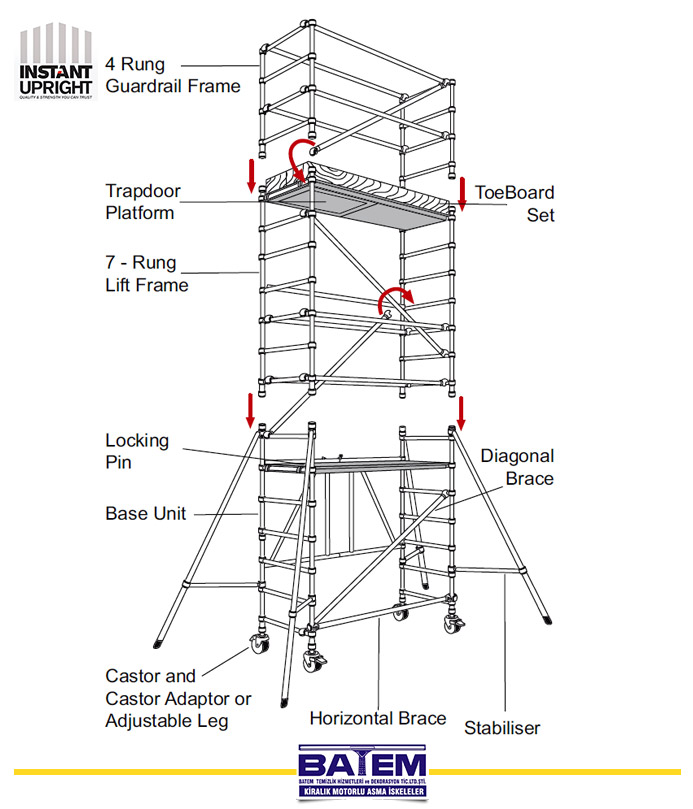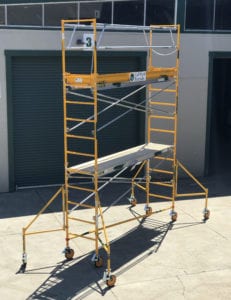Building Bridges: Using Scaffolding in Facilities Projects
Eco-Friendly Scaffolding: Lasting Practices in Building =======================================================
Accepting green scaffolding in building and construction reduces ecological impact, promotes sustainability, and supplies cost-effective remedies for business. Lasting materials like bamboo and recycled steel improve longevity and minimize energy consumption in the long-term. Waste reduction techniques via reusing campaigns and eco-friendly building methods reduced environmental footprints. Energy-efficient solutions incorporating sustainable sources and clever innovation maximize energy usage. Furthermore, these techniques improve safety and security by decreasing unsafe materials and promoting cleaner work environments. Learn more about the relevance of lasting techniques in construction for a greener and much safer industry.
Significance of Eco-Friendly Scaffolding
In contemporary construction methods, the relevance of making use of environment-friendly scaffolding can not be emphasized sufficient. When considering the ecological effect of building and construction activities, opting for environmentally friendly scaffolding remedies is important. Not just does environmentally friendly scaffolding help reduce the carbon footprint of construction jobs, however it also decreases waste generation and advertises sustainability.
Among the vital benefits of environment-friendly scaffolding is that it offers affordable services for building and construction firms. While preliminary prices could be somewhat higher than standard scaffolding alternatives, the long-term cost savings and benefits exceed the ahead of time expenditures. Green scaffolding systems are created to be reusable, long lasting, and easy to put together and dismantle, resulting in reduced labor prices and increased performance on building sites.


Lasting Materials for Scaffolding
Utilizing sustainable materials for scaffolding is a pivotal facet of advertising ecological awareness in building and construction projects. When selecting products for scaffolding, opting for environmentally friendly alternatives can greatly decrease the ecological influence of building and construction activities. Two key lasting products frequently used in scaffolding are bamboo scaffolding and reused steel structures.
Bamboo scaffolding: Bamboo is a renewable energy that grows swiftly and is exceptionally strong, making it a prominent selection for scaffolding in lots of components of the globe.
Recycled steel frameworks: Using recycled steel for scaffolding assists minimize the need for brand-new steel production, decreasing power consumption and greenhouse gas exhausts.
Toughness: Sustainable materials like bamboo and recycled steel are understood for their durability, guaranteeing the safety and stability of the scaffolding framework throughout the construction procedure.
Cost-effectiveness: While at first, some sustainable materials might have a higher ahead of time price, their long-term advantages typically outweigh this preliminary financial investment, making them a cost-efficient option in the construction industry.
Waste Minimization Techniques
Effective administration of excess materials in building and construction projects is necessary for minimizing environmental impact and advertising sustainability. Recycling campaigns play a crucial function in waste reduction techniques within the construction market. By executing recycling programs on building and construction sites, products such as wood, metal, concrete, and plastics can be diverted from landfills and repurposed for future usage. Green building strategies even more add to throw away reduction by concentrating on making use of lasting products that create much less waste during building and demolition procedures.
Incorporating prefabrication and modular construction methods can likewise assist reduce waste by minimizing the quantity of excess products produced on-site. Furthermore, appropriate planning and stock administration can protect against over-ordering materials, resulting in much less waste and cost savings. By adopting an all natural method to throw away reduction with recycling efforts and environment-friendly building strategies, building and construction projects can considerably decrease their environmental impact and move in the direction of an extra sustainable future.
Energy-Efficient Scaffolding Solutions
One ingenious approach to boosting sustainability in building and construction projects entails including energy-efficient scaffolding remedies. When considering energy-efficient scaffolding, it is vital to focus on power saving style and execute eco-friendly building strategies. These approaches not just reduce the ecological influence of building projects but likewise lead to long-term cost financial savings.
Below are four bottom lines to remember:
Use renewable resource sources: Incorporating photovoltaic panels or wind generators right into scaffolding structures can help harness renewable resource to power devices and devices on-site, decreasing the reliance on traditional energy sources.
Energy-efficient illumination: Carrying out LED illumination systems on scaffolding can substantially reduce energy intake contrasted to typical lights techniques, adding to general energy savings.
Smart technology combination: Utilizing sensing units and automation systems can optimize power use by changing lighting and devices operation based on actual needs, further boosting power performance.
Recyclable materials: Choosing scaffolding products that are recyclable at the end of their life expectancy promotes a round economy and lowers the ecological effect of construction projects.
Safety And Security Advantages of Eco-Friendly Practices
Enhancing safety and security requirements via the fostering of environmentally friendly practices in building and construction projects is critical for prioritizing the wellness of workers and the environment. By carrying out environmentally friendly and green methods, building sites can enjoy various security advantages. emergency scaffolding One considerable benefit is the decrease of hazardous products and chemicals existing in conventional construction approaches. This lessens health risks for employees and prevents prospective ecological contamination. Moreover, environmentally friendly methods often entail using sustainable products that are safer to handle and install, lowering the likelihood of accidents and injuries on-site.
Another advantage of accepting eco-friendly practices is the promotion of a cleaner and a lot more well organized work environment. By incorporating sustainable waste management techniques and lowering contamination, construction websites become safer and healthier areas for employees. In addition, the concentrate on sustainability encourages proper training and implementation of safety methods, promoting a culture of recognition and responsibility amongst building groups. Eventually, the safety and security benefits of environment-friendly methods prolong past individual projects, contributing to a more protected and sustainable building and construction sector overall.
Often Asked Questions
Can Eco-Friendly Scaffolding Be Made Use Of in All Kinds Of Building And Construction Projects, or Are There Limitations to Its Effectiveness?
While eco-friendly scaffolding supplies design versatility and can be utilized in various building and construction jobs, limitations may develop based upon product durability and the range of the task. Examining project feasibility and pondering environmental effect are critical factors.
Just how Do the Expenses of Sustainable Products for Scaffolding Compare to Traditional Products?
Expense comparison between sustainable and conventional products in scaffolding is vital for comprehending their financial viability. While eco-friendly alternatives might originally appear costlier, the long-lasting advantages of reduced environmental effect and prospective expense savings over time need to be taken into consideration.
Are There Any Kind Of Particular Laws or Certifications That Construction Business Need to Abide By When Carrying Out Waste Minimization Approaches?
Regulative needs and certification requirements play vital duties in waste reduction methods for building and construction companies. Conformity with environmental guidelines and acquiring appropriate certifications guarantees adherence to lasting methods, cultivating green operations and showing dedication to liable building and construction practices.
What Are the Long-Term Environmental Advantages of Using Energy-Efficient Scaffolding Solutions?
Using energy-efficient scaffolding solutions supplies lasting environmental advantages by minimizing carbon exhausts, conserving sources, and promoting sustainability. These solutions not just enhance energy cost savings however also contribute to a cleaner, greener building industry.

Are There Any Kind Of Situation Research Studies or Real-Life Examples That Showcase the Success of Implementing Eco-Friendly Scaffolding Practices in Construction Projects?
Study and real-life examples supply concrete evidence of the success of carrying out environmentally friendly scaffolding methods in building and construction projects. These circumstances display the favorable effect on the setting, worker safety, and long-term sustainability objectives.
Verdict
In recap, the adoption of environment-friendly scaffolding methods in building is essential for promoting sustainability, reducing waste, and enhancing safety and security.
By utilizing sustainable products, carrying out waste minimization strategies, and choosing energy-efficient options, building and construction jobs can substantially minimize their environmental impact.
It is imperative for the building market to focus on environmentally friendly practices to guarantee long-term sustainability and ecological responsibility.